David R. Michael's Blog, page 40
December 20, 2010
Writing Progress Report
Writing progress report for the week starting Monday, December 13, 2010.
Writing Project
Words
Monday
Threads – Began a new draft for editing, reorganizing.
Tuesday
Wednesday
Thursday
Gunwitch – reviewed remaining outline, minor editing.
Friday
Edited Door to the Sky chapter 1.
Saturday
Sunday
Total
Marketing/Submission
Monday
Posted "Running Free" to Guns & Magic.
Updated promo thread for HG on KB, MR, and NB.
Updated promo thread for TSF on KB, MR, and NB.
Created giveaways for both TSF and HG on GoodReads, to run from 20-25 Dec.
Tuesday
Submitted HG for review to nonsuchbook, opinionatedme, presentinglenore, seemichelleread, smexbooks, thebookbinge, redheadedbookchild, thestorysiren
Wednesday
Thursday
Friday
Saturday
Sunday
Reading List
Gladiatrix by Russell Whitfield.
Published on December 20, 2010 09:37
December 19, 2010
THE GIRL WHO RAN WITH HORSES given 4 Stars at BlogCritics

Leslie Wright at BlogCritics gives The Girl Who Ran With Horses 4 stars!
In The Girl Who Ran With Horses, [David Michael] has … built his characters from real life, with both the hurts and frustrations that are often in our every day dealings. Stevie is a fun and loving child out of place, and feeling it, acting out in her own abilities. Both her father and her brother deal with life and heartaches in their own way. And yet it takes a very traumatic circumstance to help them draw together and become a family again.
It is a heartwarming book, with just a bit of the paranormal thrown in. The communication she has with the horses is fun and frivolous — and at times painful. This would be a fun and unique story for the young adult reader. It deals with real issues and problems that face many families, and the pace is steady, easy to follow. A great book for old and young alike.
Read the whole review here…
-David
Published on December 19, 2010 21:46
December 15, 2010
THE SUMMONING FIRE Gets 4 Stars from Juniper Grove
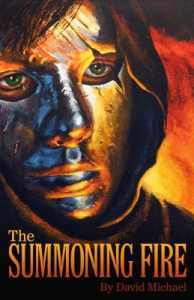
Juniper Grove gives The Summoning Fire 4 Stars!
I found it easy to relate to these characters, because even if you haven't went through the same trials as these characters have, there is no doubt that the emotions they display are those that most everyone would…
I am giving The Summoning Fire a solid rating of 4 because it successfully did its job and kept my attention, made me feel for the characters, and kept me guessing as to how it would end. I'm definitely going to read more of David Michael's writings!
Read the whole review here…
-David
Published on December 15, 2010 13:54
December Is Not a Month
Instead, December is a series of events, time sucks, and ponderings. Between the holidays, three family birthdays (including mine), end-of-year assessments, and next year planning, I don't get much done. Productivity happens in fits and starts. Focus is scattered across a variety of chores and necessities. Stress levels go up for a variety of reasons, related and unrelated.
In spite of all of that, though, I enjoy December.
Back before the turn of the century, when I still had a "real" job, I never took vacation time in December. Didn't need to. Even though the company's "year end" didn't match up with the calendar, all of the company's employees's "year end" certainly did. December was like a month of paid vacation taken at work. Especially since it seemed everyone else did take vacation time in December. Silly people. Along with subsidized health care and a 401k, December is one of the few things I miss about being employed.
I like the chaos of December. And the low expectations. I even like my birthday.
I like looking back over the year. I like anticipating the New Year and seeing how everything plays out.
Every December I take the time to write down what I accomplished in the year now ending, and then make plans and set goals for the year about to begin. So December for me is both about looking back and peering forward, reflection and introspection and prognostication.
It's fun.

December isn't a month. Not really. But I love it.
-David
Published on December 15, 2010 09:43
December 13, 2010
A Stevie Story
NOTE: This is the first story I wrote about Stevie Buckbee. The story occurs during her exile in Tulsa. It might even qualify as the first time Stevie ran with horses. In the novel, Cocoa was renamed Rain and became an appaloosa.
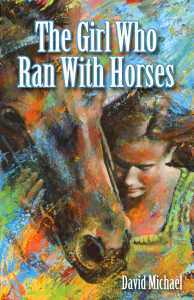 Running Free
Running Freeby David Michael
"Alright, everyone," the soccer coach yelled, "line up in the front of the goal."
Stevie Buckbee stopped the ball she had been dribbling, and kicked it to the side lines. Then she jogged over to join the other twelve-year-old girls in front of the goal.
Some of the girls on the team were slower about forming up, so Stevie found herself looking across the practice pitch towards the other goal, waiting with unusual intensity and anticipation for the coach to give them the inevitable order to run sprints. She felt her arms and legs tremble, her nostrils flare and breath in the spring air. She resisted the urge to shake her head and blow.
She laughed when she thought how much she was acting like one of her horses.
"What are you laughing at, Buckbee?" Kelly asked, beside her.
"Just thinking of how much my horses would love to sample the grass here," Stevie said.
"When will you shutup about your stupid horses?" Kelly asked.
"Maybe when she goes home to the farm," Amber suggested from the other side of Kelly. "Finally."
"That'll suck, though," Kelly said. "Some other poor girl will have to come in last on sprints."
Stevie's face got hot. "I'm not poor," she said.
"Whatever," Kelly said.
"Sprints," the coach said then, her booming voice overwhelming the chatter of the girls. "Four times, back and forth."
The other girls took off, including Kelly and Amber, leaving Stevie standing there, still trying to think of something to say.
She blew out a breath through her nose and launched herself from the line, right foot first, a right lead, the same kind of lead she liked to use when barrel racing.
Her cleated shoes clawed the turf as she ran, her legs pulling her forward as her arms pumped at her sides. She felt the wind pull her hair back like the unshorn mane of a wild horse. She imagined a white and blue barrel set right on the goal line, between the posts. This was the first leg of the race.
She finished the first sprint in last place, toeing the line, cutting left–almost cutting the turn too close and knocking the barrel over–then digging in her cleats for the next leg of the exercise as her hair whipped around face.
In her mind's eye she could see Cocoa, her mother's old mare, galloping across the practice arena back home, brown eyes gleaming, muscles rippling beneath the smooth brown coat. Stevie and Cocoa seemed to be running at the same pace, closing in on the second barrel, no longer in last place.
This time she cut right, her boots carving a furrow in the turf. She and Cocoa both cleared the barrel perfectly, legs in sync, with minimum loss of speed. Their combined momentum hurtled them towards the last barrel.
Only Amber and Kelly, the team wingers, were still in front of her when Stevie–and Cocoa–cut left again, cleared the third goal line/barrel and headed for the final goal line/gate.
Cleated boots and shod hooves pounded the turf in time with each other. Girl and horse took in huge lungfuls of air and blew them back out again, steaming. Two sets of brown eyes saw only the finish. Neither of them noticed the losers being left behind.
"Way to hustle, Buckbee," the coach said as Stevie came to a stop.
Stevie only nodded in response, still breathing hard, watching a private vision of Cocoa, prancing and gloating in the fields of her father's ranch.
# # #
Read more about Stevie Buckbee and her horses in The Girl Who Ran With Horses.
The Girl Who Ran With Horses
It's summer vacation and all 13-year-old Stevie Buckbee wants is to be close to her family again and to ride her horses–especially Jack Rabbit, her first horse all her own. But past tragedies threaten her plans before the summer even begins. Even as she discovers that she is somehow able to communicate with Jack Rabbit and the other horses on the family ranch, she finds she can no longer get through to her Dad and brother Blake. And what good is it to be able to run with the horses if no matter how fast and how far she runs, everything she knows and loves is lost?
Available in trade paperback and ebook formats!
The Girl Who Ran With Horses Edition
Price
Trade paperback (Amazon)
$9.99
Kindle edition (Amazon)
$3.99
Nook edition (Barnes & Noble)
$3.99
Ebook (Smashwords)
$3.99
Published on December 13, 2010 09:36
Writing Progress Report
Writing progress report for the week starting Monday, December 6, 2010.
Writing Project
Words
Monday
Gunwitch
255
Tuesday
Wednesday
Thursday
Friday
Saturday
Sunday
Total
255
Marketing/Submission
Monday
Updated Horse Girl promo threads at KB, MR and NB.
Posted "Reese Makes a Deal" to Guns & Magic.
Updated TSF promo threads on KB, MR and NB.
Submitted HG for review to tributebooksmama
Tuesday
Submitted HG for review to annasbookblog, angieville, kbgbabbles, bookgazing, booksandotherthoughts
Wednesday
Submitted HG for review to dreaminginbooks, galleysmith, heylady, monkeybearreviews, bookshelfsofdoom
Thursday
Friday
Wrote about how I used The Journal to write Horse Girl for Guns & Magic and The Journal's monthly newsletter.
Saturday
Sunday
Submitted HG for review to junipergrove
Reading List
GURPS 4e Low-Tech.
Tag by Simon Royle.
Published on December 13, 2010 09:34
December 12, 2010
Why I Choose to be an Indie Author
The short, somewhat flippant answer is: Because I can.

Any time there's an indie option, I trend in that direction. I have a problem with authority and established channels.
Any time I can produce a product and sell it over the Web, I trend in that direction. I have my own ideas and I want to pursue them my own way.
Any time I can produce a product and sell it without having to actually be there, in person, to sell it, I'm all for it. I like economies of scale, and I like making money in my sleep.
A Business Perspective
In 2003, I wrote The Indie Game Development Survival Guide based on my own experiences as an indie game developer. In that book, I gave the following three reasons why going indie had become a viable option for video games:
Stable platforms and inexpensive development tools (for creation).
Ubiquitous Web access (for distribution).
Acceptance of try-before-you-buy software (for selling).
I was a still teenager when I first decided I wanted to be a writer. I wanted to see books with my name on them in bookstores and libraries. I wanted people to enjoy the stories I made up in my head. Until recently, though, the only way that would happen was to have your book published by a "real" publisher. Vanity publishing was, and still is, viewed with disdain and pity. Self-publishing was considered a fool's game, a desperation ploy for wannabe's.
It's a different world now.
Ereaders like the Kindle and the Nook and others have become mass market items. So have smartphones with ereader applications. And on top of that, more people are willing to read books on laptop screens.
Print-on-demand services like CreateSpace provide low-cost, high-quality printing of paperbacks and even hardback books.
Distribution channels like Amazon and Barnes & Noble exist that readers use on a daily basis to find their books, both ebooks and printed, both online and offline.
The integration of print-on-demand services and distribution channels means you don't have to carry an inventory of your book or take and fulfill orders.
Not all the work is done for you, of course. Just like in indie game development and indie software or pretty much anything else (including having your books published in the more traditional way), you have to do your own marketing. In this case, you have to go out and find your own readers. I'm still learning how to do this, but I would like to think I'm getting better at it.
The tools, though, are there. All you have to do is make use of them.
A Personal Perspective
After my failed attempts to find an agent in 2005 and again in 2007, I became quite disillusioned with the entire publishing process. The staggering inefficiency of the process really got me down. As I understood it at the time, I was supposed to send out dozens, maybe hundreds of queries to an agent, 95% of which (or more) would be ignored or rejected. And then, once I had found an agent, I would get to do the whole process again, this time sending queries to publishers, but with the same (or worse) predicted failure rate. There was to be a lot of time (and a lot of rejection) between writing something and seeing it published.
Rejection I can take, but I hate wasting time and energy. And it looked like there was a lot of wasted time and energy in the process as a whole.
I wanted to write, but it was hard to see the point of writing if I wasn't going to be able to penetrate the process. I've never been good at jumping through hoops, and it looked like I was going to have a lot of hoops to clear. And that's when I slowed down my writing (plus, in 2008 and most of 2009 I was working fulltime developing The Journal 5).
In the second half of 2009 I discovered that I had been…not lied to exactly, but misrepresented to repeatedly. I did not need to get an agent first. I could go straight to the publishers and get rejected by people who matter–and who if they didn't reject me could actually write me a check. Half of the wasted time and effort could be eliminated.
Also in late 2009 I started hearing about authors who were releasing their work straight to the Kindle and other ereaders. And they were making money at it. Maybe even publishers weren't needed.
Both of those got my attention, and I changed my writing goals for 2010. I decided that I would still submit a book to publishers, but if that book wasn't picked up, I would release it on my own.
That decision helped me start writing again. I think a big part of why that decision helped is that it put me back in control of my writing. I like being in control of my career. Nearly 12 years of being self-employed has demonstrated that rather well, I think. My writing, though, had never felt under my control (except during A Short Story a Day when I was making no attempt to sell my work). I had to write for agents, and for publishers. I had to follow edicts and decrees of people I didn't know and couldn't influence.
I did submit a book to publishers this year, back in the spring, and I wrote throughout the year (after a bit of not-writing in the spring). As the year continued, though, and as I learned more about ebooks and heard about authors who were doing well as indies, I decided I wanted in on that.
The world of books and publishing has evolved to the point where indies have an inroad. A massive distribution channel is there, the stigma of self-publishing is going away, if slowly, and opportunities are growing with the sale of every Nook and Kindle. Just like the worlds of software and video games had evolved over a decade ago.
I had to give it a try. The mile-wide indie streak in my personality insisted that I give it a try.
And here I am.
-David
Published on December 12, 2010 13:36
December 10, 2010
How I Used The Journal to Write THE GIRL WHO RAN WITH HORSES
NOTE: I wrote this for The Journal's December 2010 Newsletter. I decided I'd post it here too.

In late 2005, as I was finishing up a novel, my 13-year-old niece, Heather, told me that my next book should be "about a grl and she is a brl rcr and she iz jus like ME" (translation: "about a girl who is a barrel racer just like me").
Heather actually told me a lot more than that. I recorded our IM conversation in The Journal as the first my many notes for the project:
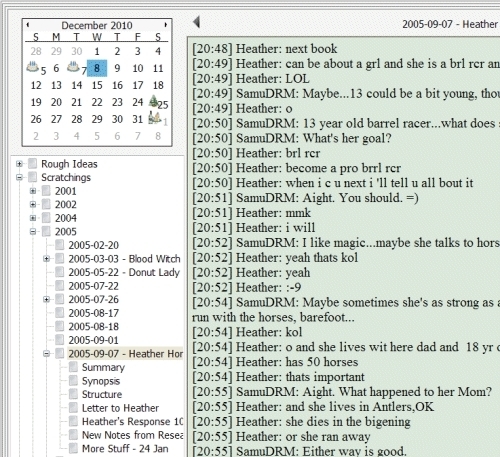
I started with that chat log, and used it as the root entry for a collection of notes about the story: the summary, a rough outline, research, and even some correspondence with Heather (where I had her come up with names for most of the horses).
When I (finally) decided to start work on this book in January 2007, I created a new set of entries for it in what I call my "Development" category (which is also a loose-leaf category):

I linked to my original notes, then copied over the rough line into a new entry and began fleshing it out:

Most of the sub-entries under "Notes" for the Horse Girl project were from my research into horses and horse ranching. I'll admit it: I'm a city boy. I've ridden horses only a few times in my life, and never as an adult. I had a lot of research to do, even just for the outline. I kept track of most of it here. I would copy the link to the articles I found–and usually I would copy the entire text of the article (and most of the images) into an entry. Because you never know if Web articles are gonna stay where you found them.
Once I was happy with my outline, I created a separate loose-leaf category for this project where I would do the real work of writing a book: the actual writing.
I called the new category "Horse Girl" (because that's much less effort to type and takes up a lot less tab space). I created a some root-level entries to help keep things organized. You can see those here:

For those of you keeping count, what I cleverly call "Outline – Draft 1″ in the above screen shot is about draft, oh, 4 by this time. But it's the first draft I created in this category.
 And, yes, the outline evolved over the course of writing the book. For some reason, though, I didn't keep draft copies.
And, yes, the outline evolved over the course of writing the book. For some reason, though, I didn't keep draft copies.I used a series of entries to manage the actual manuscript: A top-level "Manuscript" entry, a sub-entry for each separate draft, and then separate sub-sub-entries for each chapter. I used this structure because it greatly simplified exporting the entire manuscript draft to a single file. Plus, I could copy the "Draft" entry and all sub-entries (right-click the "Draft …" entry and choose "Copy Entry to Clipboard") and then paste them into a new entry and sub-entries (right-click on the entry again and choose "Paste Entry from Clipboard"). A quick rename of the newly pasted entry to reflect the new draft number, and I was good to go.
I also created a "Thoughts" entry where I could leave date-stamped notes to myself as I went along. And I created the "Notes" entry where I added further research links and images (I do a lot of what you might call "just-in-time research", usually via Google, that happens in the middle of a day's writing).
I'm sure you've noticed the "Publisher Hunt" entry, which has sub-entries as well. Under there I put drafts of my query letter (there were several) and compiled the list of publishers I wanted to submit to. For each publisher, I collected their mailing address, Web page, and submission requirements in separate entries (one per publisher). I also tracked my submission history, including what kind of response I received (most of them were form rejections; c'est la vie).
Yes, I'm a bit of a text-oriented packrat. If I wrote it, I like to keep it handy. Fortunately, The Journal makes it easy (if I do say so myself) to hang onto all of those notes and scraps of information I accumulate–and organize them so they don't clutter up my workspace.
And that's about it. I made heavy use of loose-leaf categories and entries to formulate, plan and write The Girl Who Ran With Horses.

In November 2010, I released The Girl Who Ran With Horses as an independently published novel, available in both trade paperback and ebook formats.
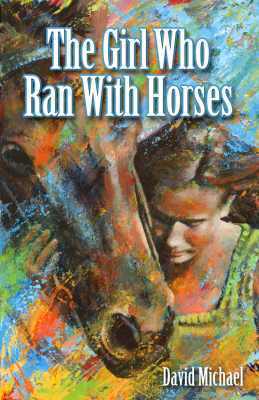
The Girl Who Ran With Horses
Welcome Home, Stevie!
It's summer vacation and all 13-year-old Stevie Buckbee wants is to be close to her family again and to ride her horses–especially Jack Rabbit, her first horse all her own. But past tragedies threaten her plans before the summer even begins. Even as she discovers that she is somehow able to communicate with Jack Rabbit and the other horses on the family ranch, she finds she can no longer get through to her Dad and brother Blake. And what good is it to be able to run with the horses if no matter how fast and how far she runs, everything she knows and loves is lost?
The Girl Who Ran With Horses Edition
Price
Trade paperback (Amazon)
$9.99
Kindle edition (Amazon)
$3.99
Nook edition (Barnes & Noble)
$3.99
Ebook (Smashwords)
$3.99
Published on December 10, 2010 14:29
December 8, 2010
Jim's Night Out
A Story in 100 Words
The bunny spooked.
Jim watched the bunny bound away, wondering how rabbits survived in this neighborhood once the weather turned cold. Or why any rabbits lived in this neighborhood at all. The yuppies guarded their gardens with electric fences and firearms.
Maybe the bunnies were supposed to be inside. But, like Jim, they messed up and got sent outdoors.
At least he had a doghouse.
He snuggled into his blanket–at least he had a blanket too–and tried to sleep.
Maybe Linda would let him back in the house tomorrow. So he could shower before he went to work.
Published on December 08, 2010 17:00
December 7, 2010
Serene Approval
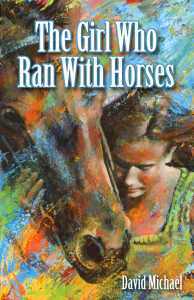
My 9 year old daughter, Serene, stayed up late last night and finished The Girl Who Ran With Horses in a single sitting (bedding?). This morning she announced the book, "Awesome."
Yes, I'm pleased.

Serene was also very happy with the small book I did with her name in the title (and her photo on the cover): Serene Morning & Other Tales of a Little Girl.
I may have a small fan club, but she's very supportive.

That said, there's no way she reads The Summoning Fire before she's … I dunno … 23?
-David
Published on December 07, 2010 11:01



